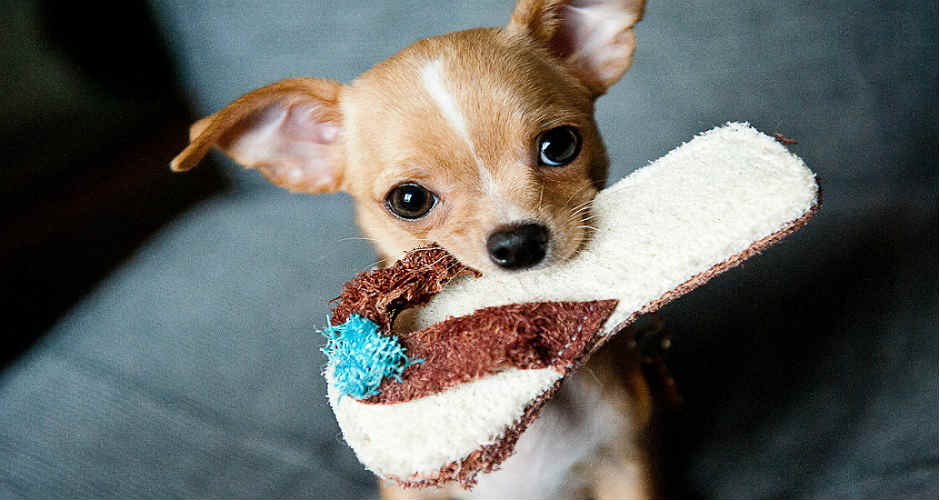Tips for Puppy Proofing Your Home
By: Dr. Clayton Greenway, B.Sc., DVM | Sep 30, 2016

Bringing home a new puppy is a lot like bringing home a new baby: they’re a wonderful bundle of joy that needs a lot of special care. This includes making sure that they’ll be safe in their new environment. Here are 5 tips for puppy proofing your home.
1. Make a safe space.
While a lot of puppy proofing seems like common sense, not all of it is immediately obvious. In the excitement of getting ready for your new pet, you’ll probably miss something on your puppy checklist. Start with making a secure, safe area that your dog can call home: whether it’s a dog basket in the kitchen separated by a baby gate, a crate with a cosy blanket or a bed in the living room. It’s nearly impossible to keep an entire house puppy proof 24/7. One dedicated area for your dog will help them settle in and allow you to safely leave them home alone.
2. Check for the following puppy hazards, one room at a time:
- Garbage bins without a secure lid
- Poisonous plants (if in doubt, make sure they are out of reach)
- Dangerous décor such as candles or breakable knick-knacks
- Exposed wiring or power cords
- Swallowable objects or objects that can become a choking hazard once chewed
- Unlatched cupboard doors or drawers
- Human food within reach of your puppy
Hanging cords from blinds
Make sure cleaning supplies, pesticides and medication are secured and out of reach. Pay special attention to areas such as the kitchen, laundry room and bathroom where most of these items are stored. In the bathroom, keep the toilet lid down and consider buying a latch to prevent the risk of drowning.
3. Don’t forget these less-obvious hazards:
- If your puppy wears a collar while unattended, make sure it is a quick release collar. While uncommon, there have been cases of dogs strangling themselves on their collar, even while they are crated.
- Secure furniture such as bookcases that could tip over when pushed or climbed.
- Keep your shoes out of reach. A chewed up flip-flop or chewed-off shoelace is not only frustrating but a serious choking hazard.
- Check the other areas of your house such as the yard, basement, and garage.
4. Give them something fun and safe to do.
Much of puppy proofing involves keeping your dog away from anything they may be tempted to chew on or play with. Don’t forget to provide them with safe and fun alternatives that will keep them occupied. Try a durable chew toy such as a rubber hollow chew toy filled with peanut butter or a puzzle treat dispenser. Ask your vet for suggestions.
5. Be realistic about wear and tear on your belongings.
Even a perfectly safe home is still at risk of being damaged by an energetic pup. It might be time to put that antique couch in storage or sell that gorgeous, high-pile rug rather than tempting fate. Consider purchasing some non-slip, indoor/outdoor rugs to protect hardwood floors and washable slipcovers for living room furniture. Easy-care furnishings will make both you and your puppy more comfortable.
For a brief overview about tips for puppy proofing your home take a look at the clip below!


Disclaimer: healthcareforpets.com and its team of veterinarians and clinicians do not endorse any products, services, or recommended advice. All advice presented by our veterinarians, clinicians, tools, resources, etc is not meant to replace a regular physical exam and consultation with your primary veterinarian or other clinicians. We always encourage you to seek medical advice from your regular veterinarian.

